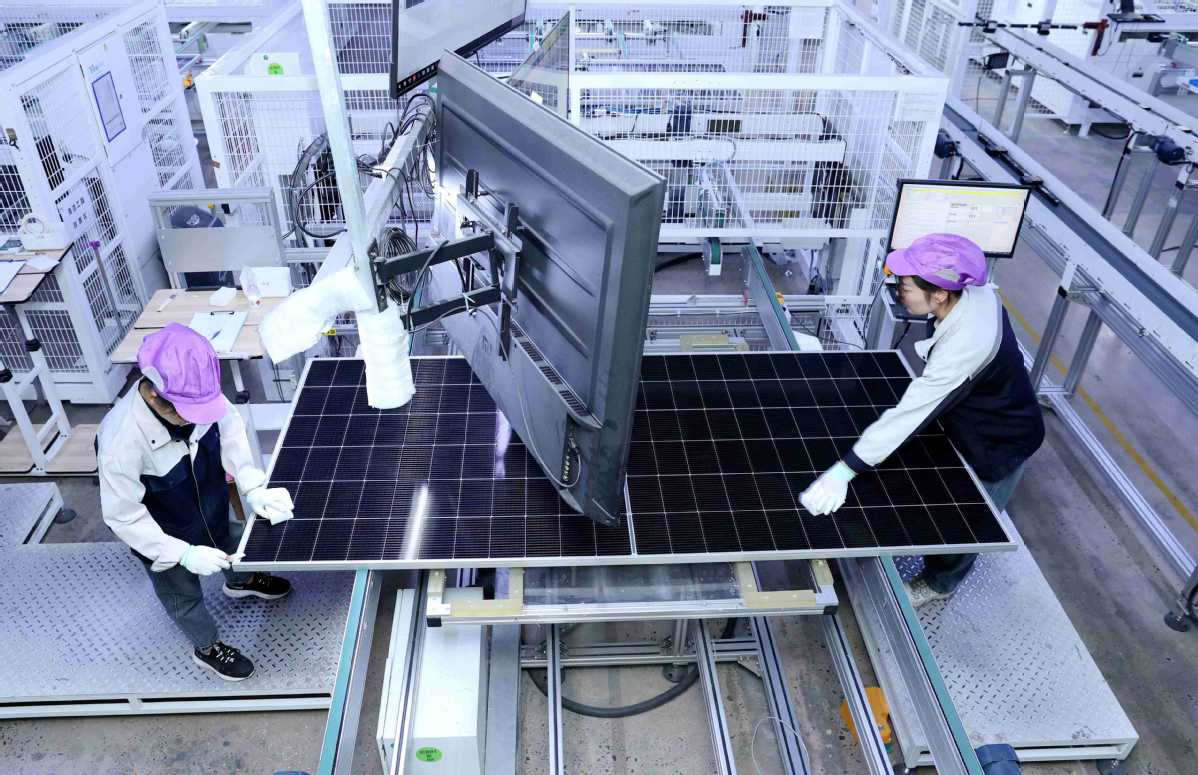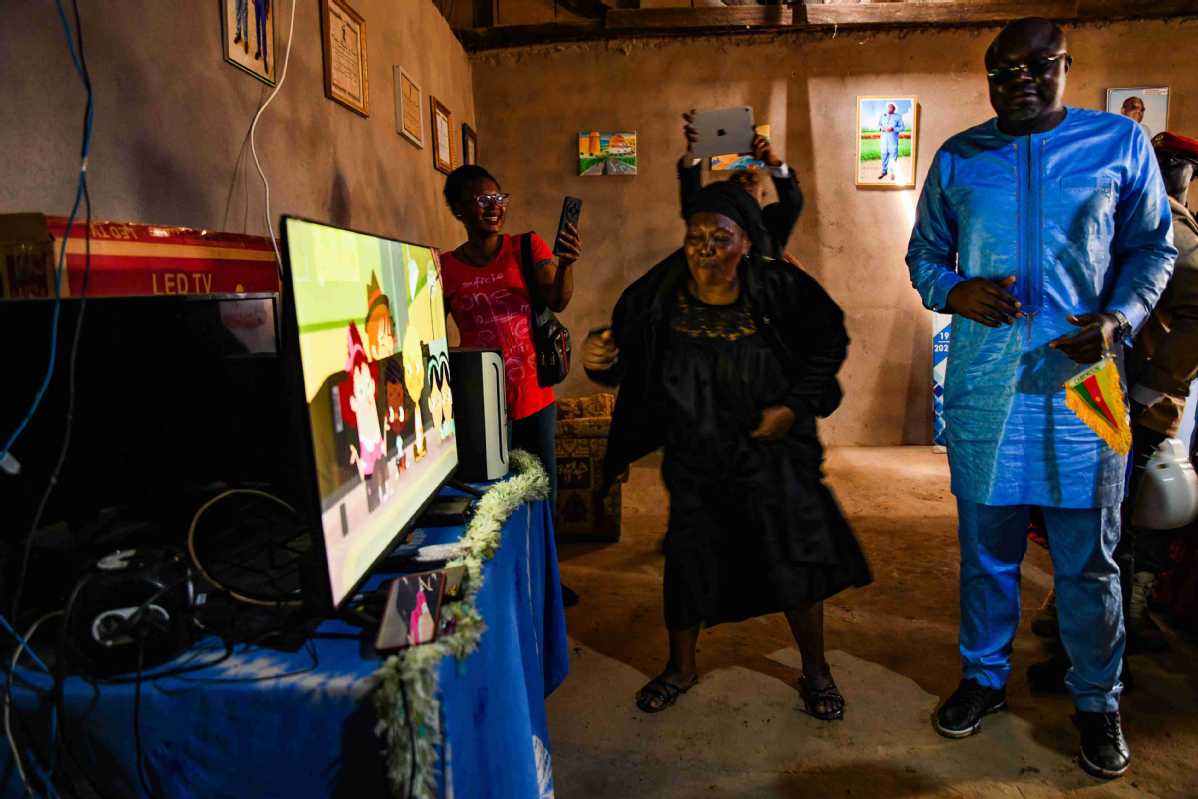
Chinese solar panel manufacturers are increasingly setting their sights on emerging markets across Africa, together with Oceania and other parts of Asia, as growth slows in traditional export destinations like Europe and Latin America, said industry experts and company executives.
Fueled by ambitious renewable energy targets worldwide and the increasing maturity of photovoltaic technology, these new markets are becoming a crucial destination for China's solar sector, which boasts significant advantages in technology and cost controls, they said.
"Emerging markets have demonstrated stable growth since 2022, with export volumes hitting new highs in the second half of 2024," said Wang Bohua, honorary chairman of the China Photovoltaic Industry Association.
The association said that in the first six months of 2025, China's solar panel exports to Africa surged 47.5 percent year-on-year, while exports to Oceania increased by 23.7 percent. North America and Asia saw growth rates of 15 percent and 12.2 percent, respectively.
"Importantly, these markets exhibit less volatility compared to the European market," said Wang.
ALSO READ: China backing Europe's green energy transition
This shift in focus is prompting Chinese companies to invest directly in these emerging markets, with several firms having announced plans to establish manufacturing facilities and partnerships in Africa and other regions.
The CPIA said that in the first half, the number of countries and regions experiencing year-on-year growth in solar panel imports from China reached a total of 115.
As many as 51 of them saw import growth rates exceeding 100 percent, it said.
Amid China's global ascendance in the manufacture and sale of renewable energy technologies, domestic companies — making the vast majority of solar panels, cells and wafers worldwide — are displaying growing influence worldwide, allowing the developing world to produce cheap electricity from the sun.
With the ever-decreasing prices of Chinese PV panels, domestic firms are also seeking new markets. African countries offer huge potential markets with millions of people on the continent lacking access to electricity and power outages a common phenomenon.
Chinese solar power giant Longi Green Energy Technology Co said it has supplied over 3 gigawatts of its high-efficiency photovoltaic products to renewable energy projects across 38 African nations, further contributing to the region's energy transition.
These projects, including a 100-megawatt photovoltaic power station in central Tunisia's Kairouan province — the largest PV power plant currently under construction in Tunisia — have substantially helped drive the construction of high-standard clean energy projects, said James Jin, president of Longi MEA and CA.
"Amid Africa's surging energy demand and fragile grid infrastructure, the combination of solar power and energy storage offers a lower level cost of energy compared to other power generation methods on the continent. The widespread availability of solar energy will be crucial to ensuring 'energy equity' and sustainable green development across the continent," Jin said.
Lin Boqiang, head of the China Institute for Studies in Energy Policy at Xiamen University, said: "Chinese companies have been proactively building overseas production networks. This not only helps them capitalize on new opportunities in traditional markets and explore emerging markets, but also enhances the resilience of the global supply chain."
Lin believes Chinese solar companies are playing a crucial role in Africa's energy transition, offering both technology and investment to address the continent's growing energy needs.
The combination of China's manufacturing prowess in solar technology and Africa's abundant sunshine creates a complementary relationship, enabling the deployment of affordable and sustainable energy solutions, he said.
According to Ember, an energy tracking group, Chinese companies shipped out solar equipment to a vast range of countries on the African continent over the course of the past year, with exports adding up to more than 15 GW of solar capacity.
Solar imports from China rose 60 percent between July 2024 and June 2025. The volume of solar panels imported meanwhile has the potential to significantly increase power generation in many African countries, with South Africa and Nigeria, two of Africa's largest economies, leading the pack, it said.

Sierra Leone imported the equivalent of more than half its total current electricity capacity, and Chad, nearly half. Algeria, the third-biggest importer on the continent, is using the modules in solar farms that Chinese companies are building there. Solar panels have also been sprouting on the rooftops of homes and businesses in cities and villages, it said.
The US pulling back from supporting "green energy innovation "could lead to China increasing its influence in Africa while impacting the continent's development and environmental sustainability, said Lin.
However, despite the potential for solar energy, Africa's energy investments are primarily directed toward fossil fuels like coal, oil and gas, said the International Energy Agency.
Nearly two-thirds of energy investments in Africa favor these traditional, carbon-intensive sources, it said.
The CPIA said the search for new markets comes as traditional export powerhouses struggle to maintain high growth rates.
In the first half of 2025, solar panel exports to Europe, the Middle East and Latin America declined 12.3 percent, 14.9 percent and 16.8 percent, respectively, the association said.
However, the potential of these emerging markets remains largely untapped, it said.
In 2024, the top 10 global solar markets accounted for over 75 percent of the world's total market share. While China's domestic market saw a staggering 212.21 GW of new solar installations in the first half of 2025, many emerging markets are still striving to surpass the 1 GW threshold.
BloombergNEF data show that the number of countries and regions with at least 1 GW of installed solar capacity reached 36 in 2024, up from 32 in 2023, and is projected to reach 40 in 2025.
Wang from the CPIA cautioned that while global solar installations will continue to grow in 2025, the pace of growth is slowing.
Some traditional overseas markets are experiencing a contraction in installations, while demand in emerging markets is growing rapidly. However, due to their smaller scale, these emerging markets will have a limited impact on overall growth, he said.
Looking ahead, the potential of emerging markets is significant.
READ MORE: China unveils 2-year plan to bolster power equipment sector
Saudi Arabia has set a target of installing over 100 GW of solar capacity by 2030. India, with its abundant resources and vast market demand, also presents tremendous opportunities for solar development. The Indian government has been actively promoting renewable energy development and has set ambitious solar installation targets.
As a result, the sustained growth in global demand for solar applications has driven further expansion of the industry's production scale. Chinese solar companies, leveraging their significant advantages in technology and cost controls, are expected to continue to unleash competitive advanced production capacity.
According to the CPIA, China has achieved steady growth in manufacturing and maintained a high global share in the capacity and output of all major segments of the solar industry chain, continuing to maintain its position as the center of the global solar sector.
Increasing competition in the industry is driving Chinese companies to accelerate their global expansion, it said.
Amid this backdrop, Chinese solar companies are actively pursuing various strategies to capitalize on emerging market opportunities and expand their global footprint, according to TrendForce's energy trend research division.
These strategies include production capacity cooperation, localized production, direct exports and diversified trade channels, it said.
Some companies are adopting innovative cooperation models that combine local partnerships with technology transfers, effectively shortening the time it takes for products to reach target markets, reducing logistics costs, and better meeting the needs of regions such as Europe and the Middle East.


